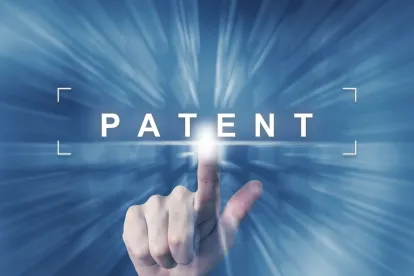The Federal Circuit’s decision in Vanda Pharm. Inc. v West-Ward Pharm. Intl. Ltd. (2016-2707, 2016-2708 April 13, 2018) provided some good news on the subject matter eligibility front for innovators and other stakeholders in the personalized medicine space, as discussed in a previous post. So there is some hope for getting issued claims that will withstand a validity challenge under the Mayo/Alice framework. But what about enforcement? How does one prove infringement of claims that require various discreet steps that can, and typically are, performed by separate actors?
Many readers will be familiar with the Federal Circuit’s decision in Akamai Techn. Inc. v. Limelight Networks (August 13, 2015) (en banc). Briefly, this decision confirmed that an act of direct infringement must be proven before there can be a finding of indirect infringement and that direct infringement requires all the steps of the claimed method to be performed by, or attributable to, a single entity.
Outside the context of a Hatch-Waxman litigation, this “single entity” rule can be a challenge for the kind of combined treatment and assay claims at issue in Vanda Pharma. Under the current state of US law, in order to clear the subject matter eligibility hurdle, these types of claims will typically need to combine several discrete steps such as “obtaining” a biological sample from a patient, “assaying” the sample for a biomarker, and “administering” a therapeutic agent to the patient based on the assay results.
In the real world, at least the steps of “assaying” and “administering” are seldom performed by a single actor, and if they are, that actor is most likely to be a doctor. In fact, that was the case in Vanda Pharma, where the plaintiff put forth evidence below of direct infringement in the form of physician testimony and corroborating patient records showing that a doctor had performed or caused to be performed, all of the active steps. These steps included obtaining a biological sample, performing the claimed genotyping steps, and administering an adjusted dose of iloperidone to a patient based on genotype in accordance with Vanda Pharma’s claim.
The Vanda Pharma case was brought under the Hatch-Waxman Act, which makes it a special case. In Hatch-Waxman litigation, 35 U.S.C. § 271(e)(2)(A) of the statute creates an “artificial” act of infringement by virtue of a company’s submission of an Abbreviated New Drug Application, or ANDA, if the purpose of such submission is to obtain approval to engage in the commercial manufacture, use, or sale of a drug claimed in a patent or the use of which is claimed in a patent prior to the expiration date of such patent.
At issue in Vanda Pharma was whether this “artificial” act of infringement can lie where the asserted patent was granted after the original ANDA was filed and the patentee had already filed suit for infringement of that patent before the defendant amended its ANDA to include a Paragraph IV certification alleging that the patent was invalid, not infringed, or both.
The Federal Circuit decided that it does, clarifying that “amendments to an ANDA, including a Paragraph IV certification for a later-issued patent, can constitute an act of infringement under §271(e)(2)(A).” This result was deemed to be in accordance with the purpose of the statute to facilitate “the early resolution of patent disputes between generic and pioneering drug companies.” It also highlights the importance of keeping a continuation application pending in the patent family covering the drug product. Doing so provides an opportunity to obtain claims that closely track the instructions on the approved label.
In any event, doctors are seldom the target of enforcement actions because no one wants to sue doctors. So in addition to proof of direct infringement, a theory of indirect infringement is necessary to get at the target defendant, typically the entity performing the “assaying” step of the claimed method.
There are two possible theories of indirect infringement, contributory and induced. Contributory requires the accused party to sell or offer to sell a “material or apparatus” for use in the patented process. However, under US law, a party that provides a service but no “material or apparatus” cannot be liable for contributory infringement. See Cleveland Clinic Foundation v. True Health Diagnostics (Fed. Cir. June 16, 2017).
In contrast, one who provides a service may be liable under an inducement theory. To prevail under an inducement theory, specific intent to encourage direct infringement must be proven. This was the winning theory in Vanda Pharma, and the win illustrates some important considerations.
First, Vanda Pharma reaffirms the importance of the drug label in proving inducement of method of treatment claims, especially those involving multiple discreet steps in addition to simply administering a therapeutic agent. Here, it is important to understand that under US law, where the proposed label instructs users to perform the patented method, the label itself may provide evidence of affirmative intent to encourage direct infringement. In fact, in the Hatch-Waxman context, where a generic drug has yet to enter the market, the content of the label is often the most critical piece of evidence for proof of intent. In this context, the “proposed label” is a reference to the label proposed in the ANDA application, which is typically the same in all substantive respects to the label of the branded drug.
In Vanda Pharma, the defendant argued that there was insufficient proof for a finding that the proposed label would encourage or recommend a direct infringer, such as a doctor, to perform all of the claimed method steps. In support of this position, the defendant pointed out that the label does not direct the performance of a genotyping test to determine whether or not a patient is a CYP2D6 poor metabolizer, and that other types of assays are available to determine metabolizer status (such as enzyme assays). Indeed, on this point the label quoted in the opinion states only that:
“[poor metabolizers] of CYP2D6 have higher exposure to iloperidone compared with [extensive metabolizers] and [poor metabolizers] should have their dose reduced by one half. Laboratory tests are available to identify CYP2D6 [poor metabolizers].” (emphasis added)
Nevertheless, the court agreed with Vanda Pharma that this language was sufficient to support the finding below that the label recommends practitioners perform or have performed a genotyping assay. The court took note of the finding below, based on expert testimony for both parties, that the “laboratory tests” referred to in the label are “genotyping tests.” In addition, the court rejected the defendant’s argument that the existence of substantial noninfringing uses precluded a finding of specific intent as a matter of law. Unlike contributory infringement, inducement under Section 271(b) does not include any language regarding noninfringing substitutes. Thus, a finding of induced infringement can still occur even if the actions of some, but not all physicians, are infringing.
The defendant also argued that there was no inducement because there is no label instruction satisfying the claim element of “obtaining a biological sample.” But the court rejected this argument and agreed with the finding below that the label implicitly recommends obtaining a biological sample, since a sample is required in order to perform the genotyping test.
Finally, this case illustrates the importance of ensuring that patent counsel are kept informed during the regulatory approval process of the product, preferably from the pre-investigational new drug (pre-IND) stage onward. Frequent communication between intellectual property and regulatory personnel will maximize the chances of obtaining strong patent protection.
Read Part one on Vanda Pharma here.




 />i
/>i
